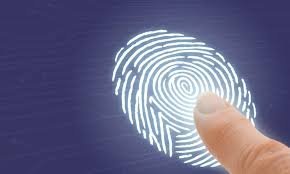In the vast landscape of human uniqueness, there exists a remarkable tool that unveils the secrets hidden within the ridges of our fingertips. The Dermatoglyphics Multiple Intelligence Test (DMIT) is not just a scientific marvel but a journey into the intricate patterns of our fingerprints, offering insights into our cognitive abilities, learning styles, and behavioral traits. In this exploration, we embark on a fascinating journey into the world of fingerprint intelligence through DMIT analysis.
The Science Behind DMIT

DMIT is rooted in the science of dermatoglyphics, a field of study that examines the intricate ridge patterns on the skin’s surface, particularly on the palms and fingers. These patterns, formed during fetal development, remain largely unchanged throughout a person’s life. The uniqueness of each fingerprint is not merely a quirk of nature; it is a manifestation of genetic and environmental factors working in harmony.
The DMIT analysis takes this uniqueness a step further by correlating specific fingerprint patterns with various aspects of intelligence, personality, and learning preferences. The premise is that the patterns on our fingertips are a reflection of the intricate wiring of our brains, providing valuable insights into our cognitive strengths and weaknesses.
Cognitive Abilities Unveiled
One of the key aspects of DMIT analysis is its focus on multiple intelligences. Traditionally, intelligence has been measured and classified in a narrow spectrum, often limited to academic prowess. DMIT, however, recognizes and categorizes intelligence in a more comprehensive manner, encompassing various dimensions of human capability.
The test typically identifies multiple intelligences, including logical-mathematical, linguistic, spatial, musical, interpersonal, intrapersonal, kinesthetic, and naturalistic intelligence. By understanding the dominance of certain intelligences in an individual, DMIT provides a holistic view of their cognitive strengths, allowing for more tailored approaches to learning and personal development.
Learning Styles and Preferences

Beyond cognitive abilities, DMIT sheds light on an individual’s preferred learning styles. Whether someone is an auditory learner who grasps information through listening, a visual learner who benefits from seeing, or a kinesthetic learner who learns through hands-on experiences, DMIT can guide educators, parents, and individuals in optimizing the learning environment for better retention and understanding.
This insight into learning preferences is particularly valuable in educational settings, where a one-size-fits-all approach often falls short of tapping into each student’s full potential. DMIT empowers educators to tailor their teaching methods to accommodate diverse learning styles, fostering a more inclusive and effective educational experience.
Behavioral Traits and Personality
Our fingerprints not only reveal cognitive aspects but also offer a window into our behavioral traits and personality characteristics. DMIT analysis often includes an assessment of emotional intelligence, social skills, communication styles, and response mechanisms to stress. This comprehensive understanding of personality traits is instrumental in personal development, career planning, and building successful interpersonal relationships.
For instance, an individual with strong interpersonal intelligence might excel in collaborative settings, making them well-suited for team-based projects. On the other hand, someone with high intrapersonal intelligence might thrive in roles that require self-reflection and individual contribution.
Application in Career Planning
The insights gained from DMIT analysis extend into the realm of career planning. Understanding one’s natural aptitudes and strengths can guide career choices that align with individual passions and capabilities. This personalized approach to career planning goes beyond conventional aptitude tests, providing a more nuanced understanding of how an individual’s unique intelligence profile can be harnessed in the professional world.
For example, a person with a dominant spatial intelligence may find fulfillment in careers such as architecture, design, or engineering, where the ability to visualize and manipulate objects in space is crucial. DMIT, in this context, serves as a valuable tool for both career counselors and individuals seeking a path that resonates with their inherent strengths.
Practical Applications in Daily Life
While the concept of fingerprint intelligence may sound like a fascinating journey restricted to laboratories and research institutions, its practical applications extend into our daily lives. Parents can use DMIT insights to tailor parenting approaches, educators can adapt teaching methods, and individuals can make informed decisions about their personal and professional development.
Understanding one’s cognitive strengths and learning styles can lead to more effective self-management and productivity. It enables individuals to play to their strengths, fostering a sense of confidence and accomplishment in their pursuits. Additionally, the awareness of personality traits can contribute to improved self-awareness and interpersonal dynamics, enhancing both personal and professional relationships.
Challenges and Considerations
As with any scientific tool, DMIT is not without its challenges and considerations. Skeptics argue that the science behind DMIT is still evolving, and the practical applications may not be universally accepted. The ethical use of DMIT results, especially in sensitive areas such as education and employment, requires careful consideration to avoid stereotyping or limiting individuals based on test outcomes.
Moreover, while DMIT provides valuable insights, it is essential to acknowledge that it is just one piece of the complex puzzle that is human intelligence and behavior. It should be used as a complementary tool alongside other assessments and considerations, rather than as a sole determinant in decision-making processes.
Conclusion
In the intricate patterns etched on our fingertips lies a map of our cognitive abilities, learning styles, and behavioral traits. The journey into DMIT analysis is not just a scientific exploration but a deeply personal one, unraveling the unique tapestry of each individual’s intelligence. As technology advances and our understanding of neuroscience deepens, the role of DMIT in shaping education, career planning, and personal development is poised to become increasingly significant. So, let us continue this journey into the world of fingerprint intelligence, exploring the endless possibilities it holds for unlocking the full potential of the human mind.
